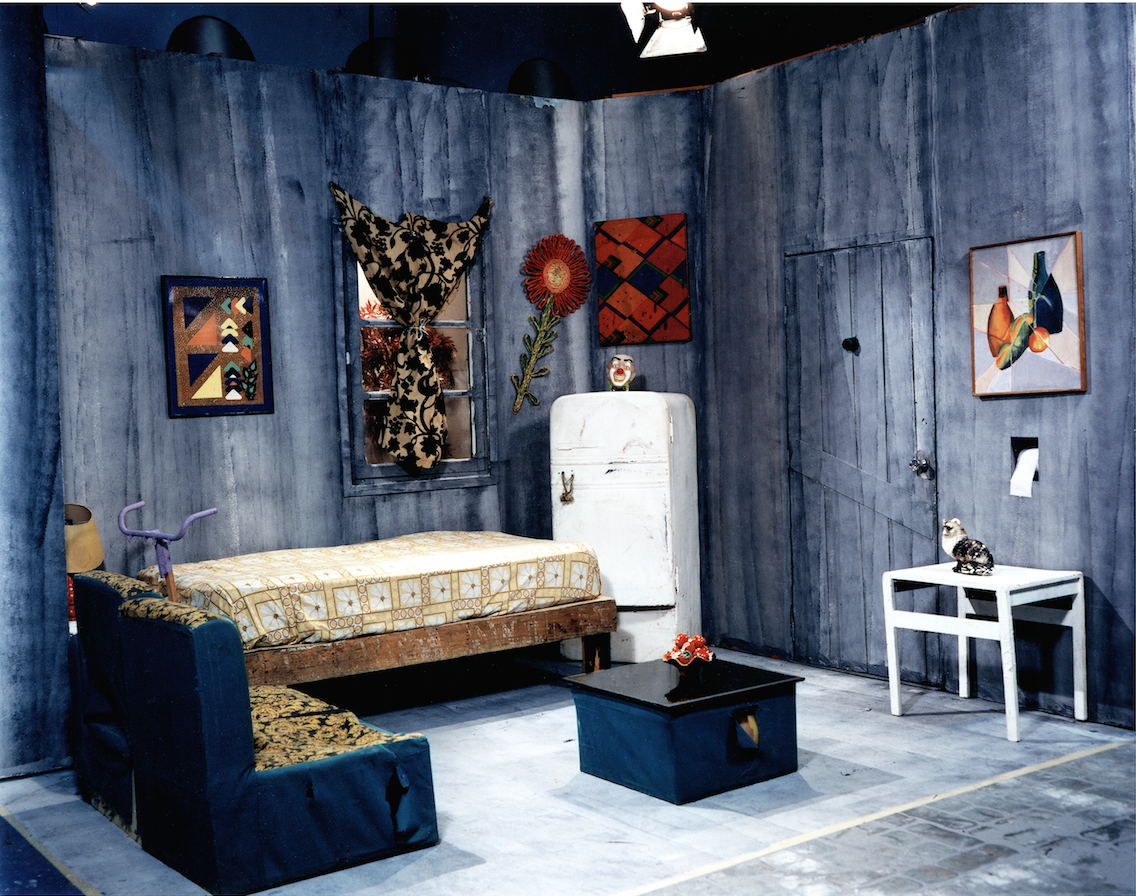Luis Molina Pantin | Inmobilia
My photographs are nudes of the sets that I see as still lives.
Luis Molina-Pantin
Deadpan renderings of sets from popular television programs are devoid of people but cropped so as to show the edges, that is to say, visually speaking, where the fictions end.
Depicted are a variety of sets, from the living room of a landed bourgeois family to a dormitory unit in a women’s prison. Not only the absence of actors, but also the lack of any clutter that might be generated by human beings gives these images an eerily unreal quality.
Undistracted by human dramas, my mind wrapped itself around the garish colors, the bright, flat lighting’s enhancement of the scenes’ artificiality, and the calculated, tidy renderings of poverty and hardship. Molina-Pantin’s particular choice of subject and title Inmobilia, with its allusion to real estate agencies, evoke references other than the grandiosity of classical painting. He transfers this brand of institutional critique to the domain of the televisual, commenting on a corporate conglomerate’s control of a collective imagination through his metaphorical deployment of property. By presenting the works as if they were part a portfolio of properties for sale, Molina-Pantin undercuts the apparent objectivity of his view and implicates himself as a purveyor of sites that exist as cultural imaginaries but that cannot actually be bought. In doing so, he hints at a far from disinterested relationship not only between artist and viewer but also between artist and patron. One might then ask what is he selling? If it is the sets themselves, is this a message about the bankruptcy of the fictions therein staged? Or do these images form an allegory, about peddling fictions as realities and about television as a virtual reality that audiences want to buy into and view as real? By teasing out these possibilities for our contemplation, Molina-Pantin captures and reflects the construction of a social reality without illustrating it in a literal sense.
Coco Fusco
Stage I (Hospital), 1997. 20 x 24 in. (50.8 x 61 cm)
Stage 6 (Rancho), 1997. 20 x 24 in. (50.8 x 61 cm)
Stage 5 (Room), 1997. 20 x 24 in. (50.8 x 61 cm)


